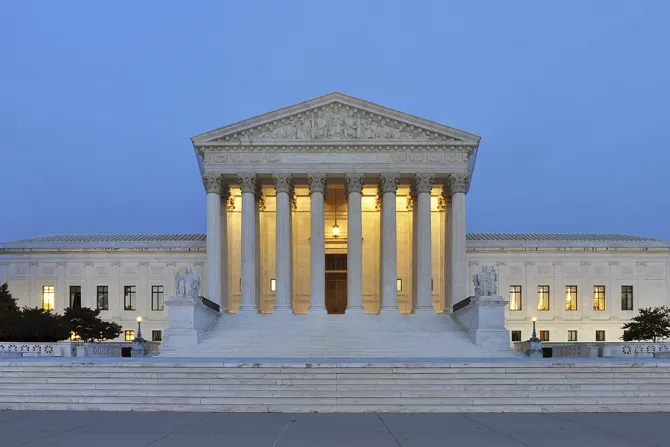Washington D.C., Jan 14, 2015 / 07:09 am
The U.S. Supreme Court is scrutinizing an Arizona town's restrictions on church signs that critics say intentionally discriminate against houses of worship.
"I never dreamed my small church signs would be a topic for the Supreme Court," Clyde Reed, the 82-year-old pastor of Good News Community Church in Gilbert, Ariz., said in a press conference outside of the U.S. Supreme Court Jan. 12.
"All we wanted to do was use temporary signs to welcome and invite the community to our Sunday morning services. We saw many different kinds of signs, like political and real estate signs, all over Gilbert all year long, so we did not think it would be a problem to place church invitation signs," Reed added. "But much to our surprise, we soon found out that Gilbert's code requires our church signs to be much smaller and up for a far shorter period of time than many other types of signs."
By law, signs that promote or stand by houses of worship must be 60 percent smaller than "ideological signs" and 81 percent smaller than political signs, which may be 32 square feet in size.
Signs for houses of worship that are "directional," giving directions to the house of worship, are limited to small signs two-by-three feet in area. They must be taken down after fourteen hours, while other noncommercial signs are allowed to be larger and may stand for months.
The town has said the regulations help with traffic safety and aesthetics. Violators face criminal fines and jail time.
Good News Community Church is small and new to the community and lacks a permanent location. The church's backers say the rules particularly affect churches like it.
In oral arguments that began Monday, David Cortman, Alliance Defending Freedom senior counsel who is representing the church, noted that the town laws are not as strict for directional signs to homebuilders' sales events or for homeowners' association event signs.
"The town's code discriminates on its face by treating certain signs differently based solely on what they say," he said before the court.
Philip Savrin, the attorney representing the town, cited the need to limit the number and duration of signs. Otherwise, he said, the signs would have to be "all large enough to accommodate the largest message that needs to be communicated." He warned that towns would adopt a "one size fits all" rule if the court makes a strict decision.
Supreme Court Justice Elena Kagan pressed Savrin on the "level of scrutiny" the town gave to different kinds of signs.
Savrin said that the town's distinctions are permissible under constitutional law "without relation to the content or in terms of favoring or censoring certain viewpoints or ideas."
Pastor Reed said the town laws mean that church signs stand for only 14 hours. For the Good News Community Church, this means "placing them in the dark of night the evening before our services."
"This whole experience has been shocking to me – our signs inviting people to church are very important yet are treated as second-class speech," he said.
Cortman said the Supreme Court has a history of treating all speech in "a content-neutral manner."
"No one's speech is safe if the government is allowed to pick free-speech winners and losers based on the types of speech government officials prefer," he said at the press conference.


